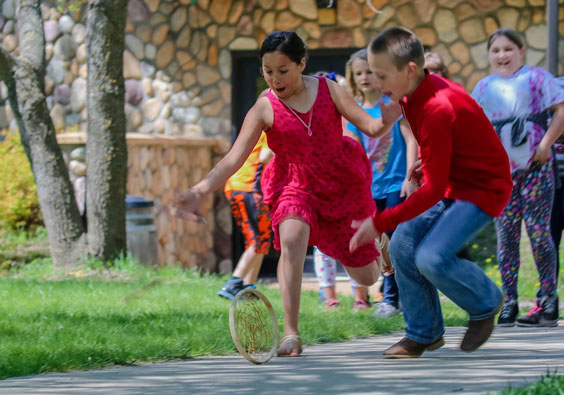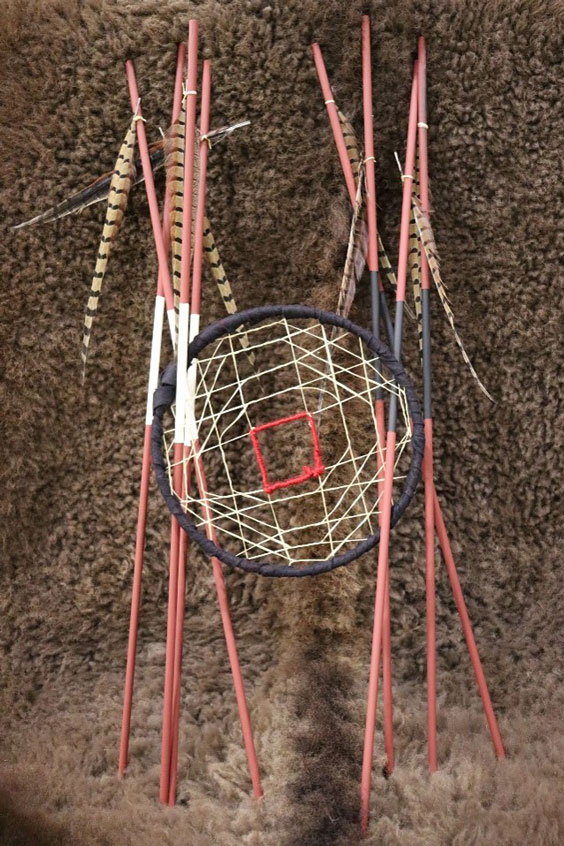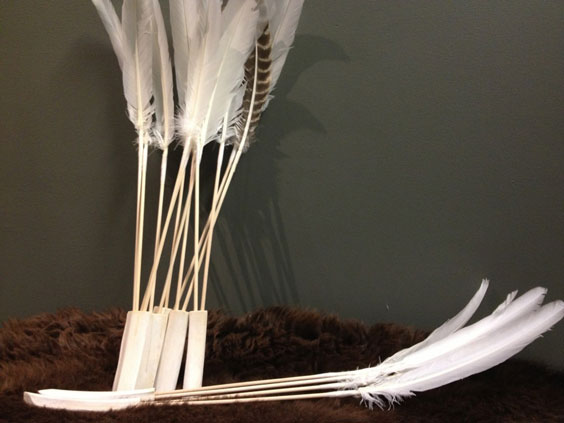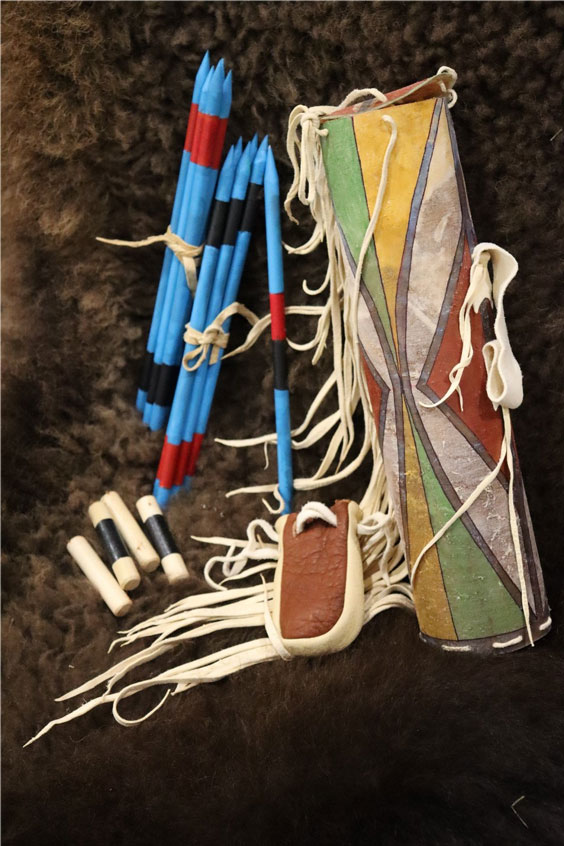The Linda Slaughter Painting and the Meaning of Conservation, Preservation, Restoration, and Repairs
As curator of collections management, I get asked from time to time if we ever restore artifacts at the State Historical Society of North Dakota. The easy answer to that is no. But then the visitor will point out the recent work carried out on the Linda Slaughter painting. This is when we have a little conversation about what we mean by conservation, preservation, restoration, and repairs.
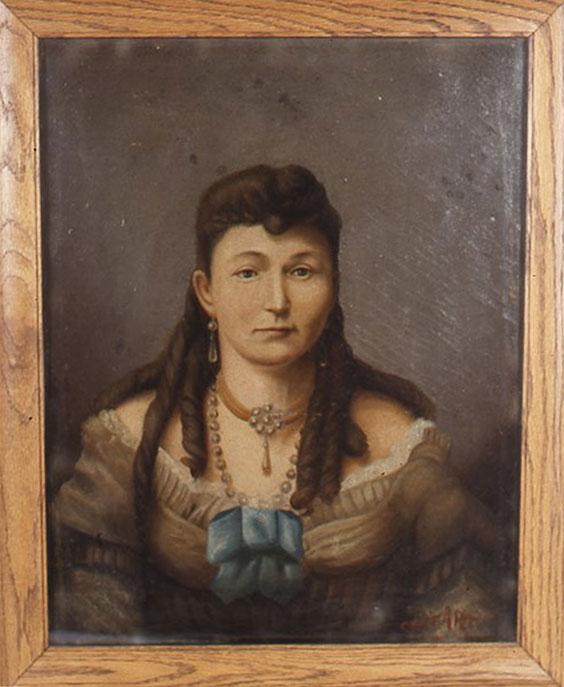
Portrait of Linda Slaughter before conservation. SHSND 2920
On the surface, conservation, preservation, restoration, and repairs all seem to imply the same thing, but in the museum world each is very different. Repairs mean fixing something that is broken or torn. For instance, if someone glues a vase back together or sews up a hole in a garment, they are repairing it.
Restoration is the process of taking an object back to a nearly new condition. Think about the person in the garage restoring a 1964 Mustang to how it looked coming off the factory floor. They usually have no issues repainting the body or getting the necessary new parts. This is why we don’t restore artifacts at the North Dakota Heritage Center & State Museum. Restoration erases the artifact’s signs of use. How an item was used is part of an object’s history, and we don’t want to destroy the history.
Preservation is preventing damage and reducing the rate of deterioration that all artifacts experience. This is what we strive for here at the State Museum and is in line with best practices at most other museums.
Finally, conservation aims to improve the condition of an artifact by stabilizing its physical problems and addressing surface disfigurement caused by deterioration and/or damage. Conservators strive to retain as much of the original materials as possible, but their work should always be reversable and not cause damage to the object in the long run. Conservators are highly trained individuals with advanced degrees, which include knowledge of art history, chemistry, and other sciences. They are also usually talented artists.
Occasionally, I will repair an object—this usually involves sewing a button that has fallen off a garment back on so it can be exhibited. Even then, the repair is documented with before-and-after photographs as well as a report of what was done, including all materials used. But most of the time what I do is preservation. I make sure that the artifacts’ environment is correct, that the lights are not too bright to cause fading, that there are no bugs or vermin to damage the artifacts, and that any materials we use around the artifacts are acid free, inert, or archivally safe.
Every so often, we will have a damaged artifact that requires the services of a trained conservator. The painting of Linda Slaughter—pioneer educator, author, and activist—is an example of such an item. In preparation for the 150th anniversary of Bismarck’s founding later this spring, we began thinking about what artifacts could be used to mark the occasion. We all know the significant role Slaughter played in the early years of Bismarck and North Dakota and thought her painting would be an excellent way to explore these important contributions. (For an excellent intro to Slaughter’s fascinating life and achievements, see this earlier blog post by Manuscript Archivist Emily Kubischta.)
But we had a problem. There was a large tear in the neck of the portrait, which had been badly repaired in the past. Also, the varnish had yellowed with age, and we would later find out there was other damage. I am not a trained conservator, and this kind of damage is well beyond anything I would attempt.
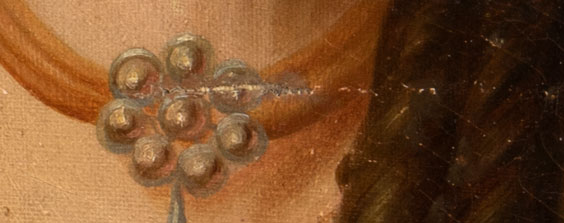
Close-up of damage to neck.
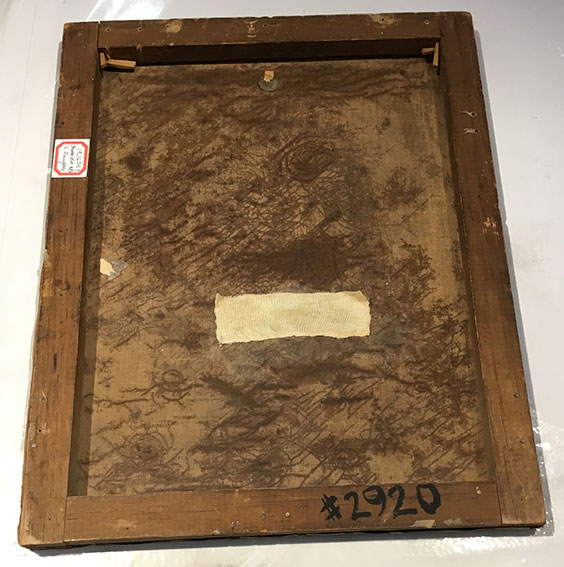
Previous repair to the tear in the neck included gluing a piece of fabric to the back to stabilize the edges. Courtesy MACC
In August 2018 we took the painting to the Midwest Art Conservation Center (MACC) in Minneapolis for an evaluation and cost estimate for the conservation.
Once the process began, Alexa Beller, a painting conservator at MACC, wrote to say, “I have consolidated the tears, punctures, and areas of loss with a stable adhesive to prevent additional loss of paint. I then cleaned the verso [back] of the canvas with a dry brush, vacuum, and soot sponges. There was a bulge running across the lower edge of the canvas caused by lots of dirt and debris trapped between the canvas and stretcher.”
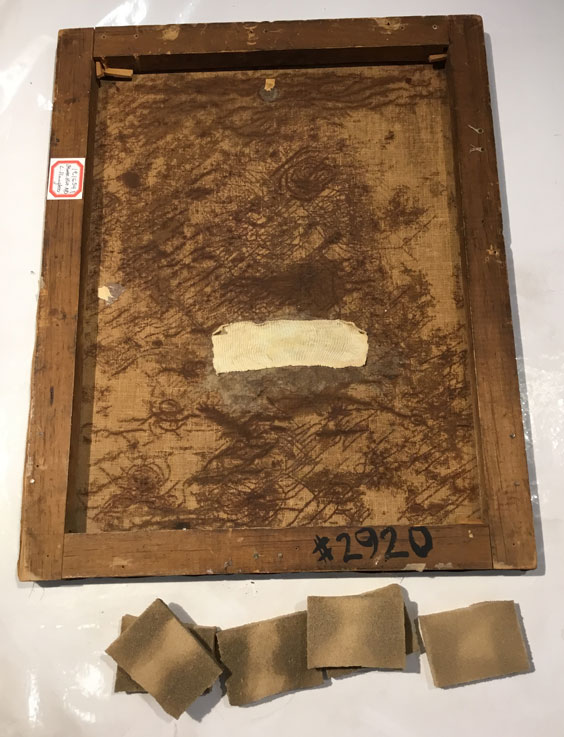
Back of painting with the dirty sponges used to clean it. Courtesy MACC
In her email Beller also noted, “After lots of testing, I then began to clean the recto [front] of the painting with a pH adjusted aqueous [water] solution to remove the accumulated grime. I reduced the discolored natural resin varnish with a solvent mixture after additional testing. This solution also reduced some spots of discolored overpaint across the surface. There was additional grime and dirt trapped underneath the old varnish, so I made a second pass with the same aqueous solution. ... Reduction of the varnish revealed clearer tonality and more details in the figure’s hair and face.”
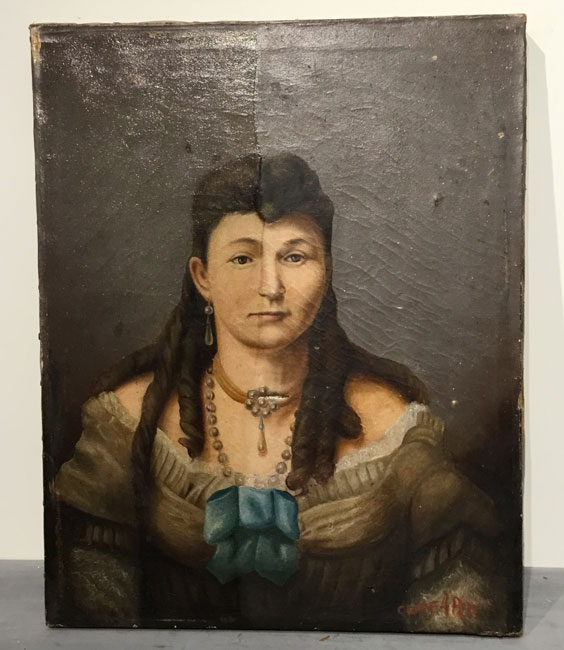
Slaughter portrait showing the right half of the canvas after cleaning. Courtesy MACC
Beller also told us in her email: “After cleaning I began to remove the three patches on the verso and their adhesive residues with a scalpel. ... I then locally humidified these areas to relax the tears and punctures into alignment in preparation for mending tears and canvas inserts for the punctures.”
Beller put in weeks of work just on testing, observing, planning, and cleaning the painting. It then took months more to finish the work, as she needed to repair the tears and holes, apply a new varnish, and fill in the areas of paint loss. It is a slow process to let materials dry, settle, and cure.
Part of the process involved applying a new stable and non-yellowing synthetic resin varnish to the surface. Beller explained, “This allowed me to really see all the fully saturated colors and tones to begin filling the losses with a pigmented wax mixture and inpainting abrasions and losses with a conservation-grade synthetic resin medium. The inpainting materials we use are always selected to remain colorfast and fully reversible in solvents that will not adversely affect the original paint if my work ever needs to be removed.”
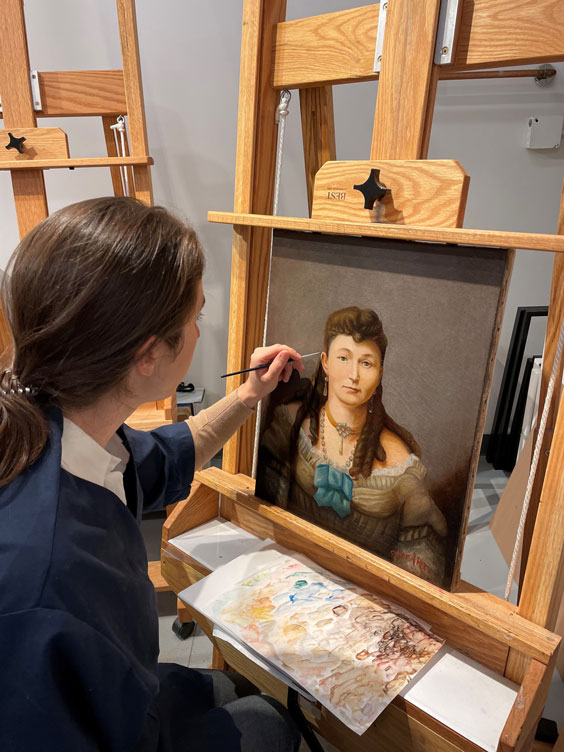
Conservator Alexa Beller works on inpainting areas of paint loss. Courtesy MACC
During the last stages of the conservation, Beller noticed some odd lines in the composition that seemed to be compositional changes. She wrote: “Sometimes this happens when an artist changes their sketch in the early stages of painting and continues on top of the older version. … With the grime and old varnish removed, the changes in this composition became slightly more visible to the naked eye.” Using an infrared camera that can detect underdrawings, Beller identified several changes to Slaughter’s necklace.
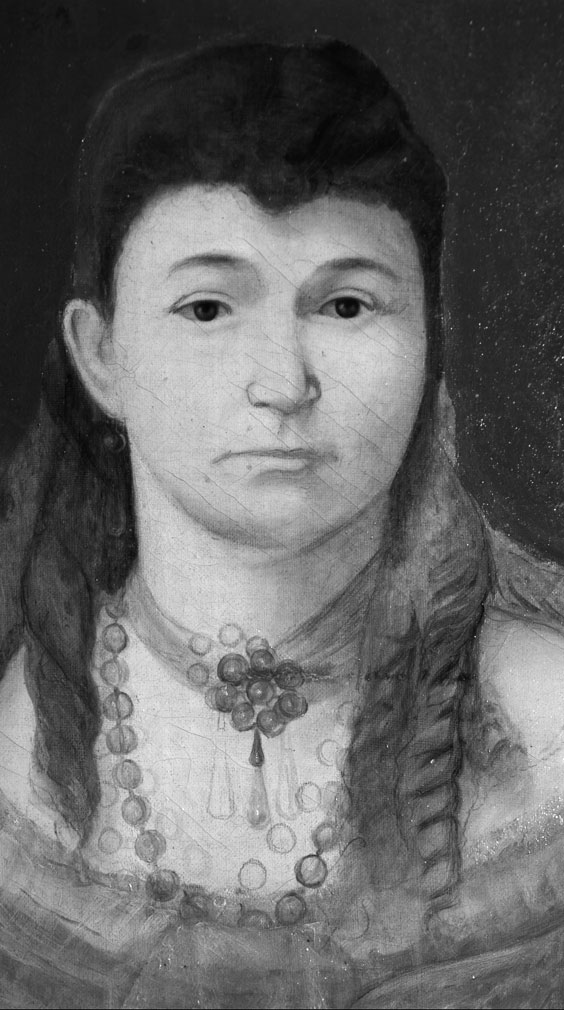
Infrared image showing the artist’s changes. Courtesy MACC
Our early records of the painting indicate that it arrived in the collection with a gilt frame. At some point the canvas was removed from the frame, and that frame was lost. While the current frame was nice, it wasn’t in a style typical of the late 1880s, and we decided that the portrait needed a new frame. We contacted Minneapolis-area framers for ideas and ultimately selected Andrew Webster of Master Framers to carry out the work. Webster and his team built a custom 1880s-style gilt-and-wood frame, which features current conservation techniques such as a lining on the inside of the frame to prevent future damage to the portrait. And since the frame was built specifically for this painting it provides a perfect and secure fit.
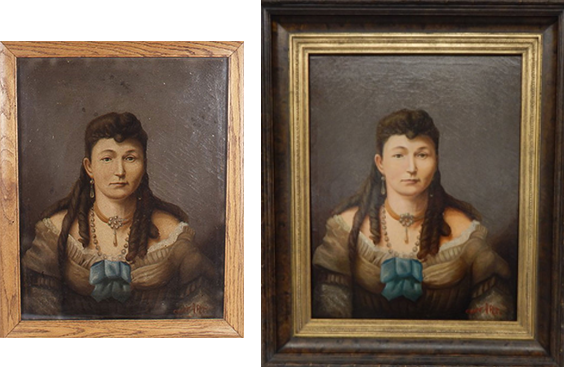
The painting before (left) and after conservation.
The Slaughter painting is now ready for the State Historical Society to use in upcoming exhibits. And with proper handling and environmental conditions, the painting should continue to look great for a hundred years or more.


